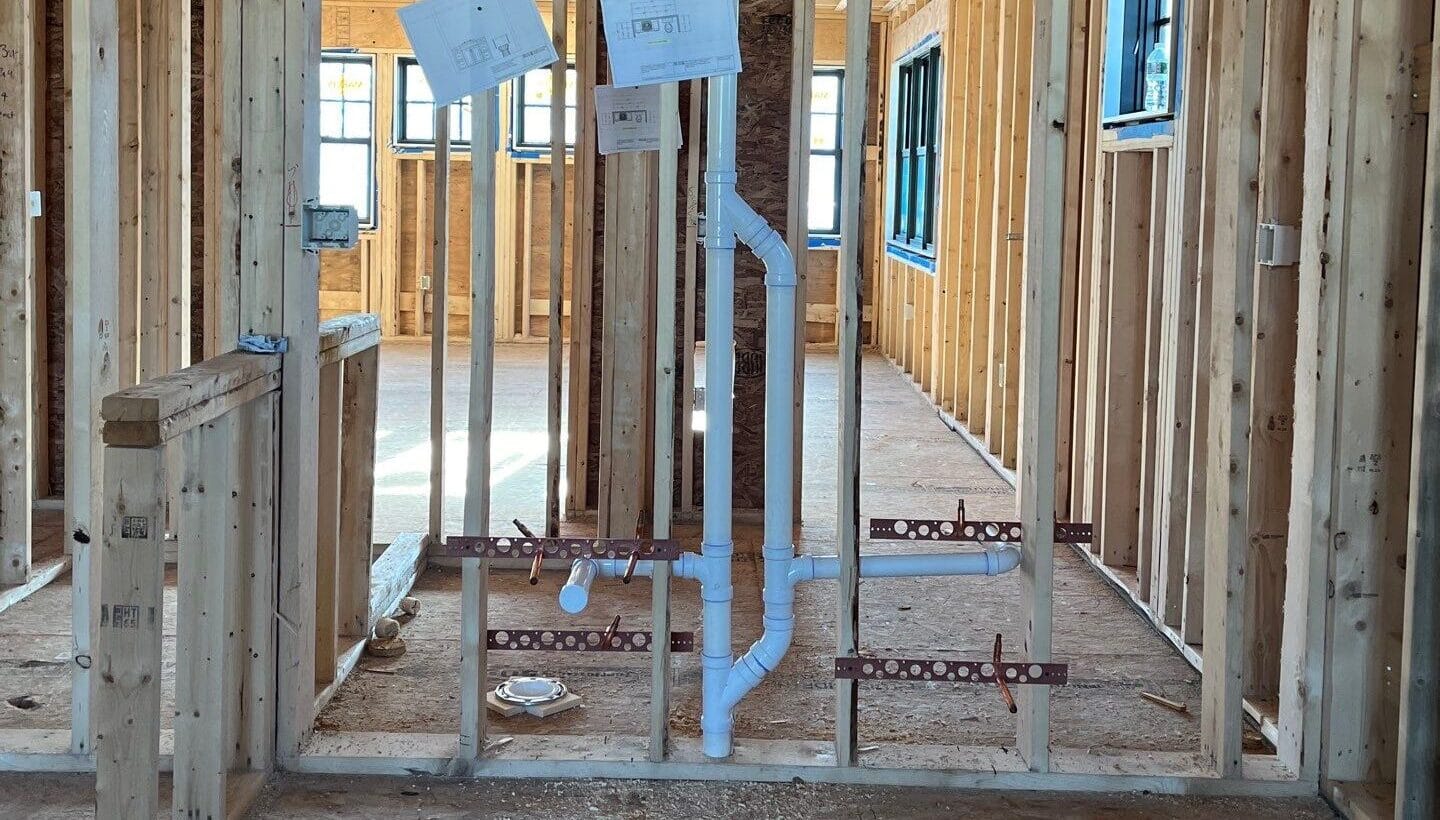While air might not be the first thing that jumps to mind when thinking about plumbing, it has a vital role to play. While the general purpose of plumbing is to move water from one place to another, it’s rarely simply a matter of flowing along a pipe. Plumbing air vents serve multiple purposes, aiding drainage and blocking nasty gases from working their way up through your pipes.
If there’s a problem with the water in your home, it might not be the water at all.
Understanding Plumbing Air Vents
Plumbing air vents come in a few different varieties, aiding with a few different jobs within your plumbing. At the simplest level, they do exactly what they sound like: they allow air into your system. Why they do this depends on where they’re installed.
But why would you want air in a system designed to bring and drain water? Well, plumbing vents serve two major purposes in your home:
- Aiding Drainage: a pipe filled with water doesn’t have room to allow more through, though really, this is just a secondary boost.
- Blocking Sewer Gases: offering an easy route out of your plumbing that doesn’t come through your home.
Keeping the air pressure in your plumbing at just the right level allows things to flow smoothly.
Types Of Plumbing Air Vents
There are few different varieties of plumbing air vent that you might find in your home. The most common components are:
- Vent Stacks: A vertical pipe that allows sewer gas out and fresh air in. They usually go through your roof, meaning any nasty smells are conducted away. They’re vital for maintaining a healthy air pressure in your plumbing.
- Main Vent: the line which connects directly to the sewer line, meaning that any gas escapes without entering your home.
- Branch Vents: The lines which connect the traps around your home to the vent stack.
Depending on the exact specifications of your plumbing setup at home, you might find the following types of vent:
- True Vents: A direct vent from a pipe or trap, used for a single fitting or appliance’s trap.
- Common Vents: A vent installed at the intersection between two or more pipes, allowing multiple traps to ‘share’ a vent.
- Re-vents: Also called auxiliary vents. These are usually installed horizontally where a vertical pipe isn’t an option. They connect directly to main sewer vent pipe.
- Circuit Vents: most common in apartment complexes and multi-family homes. These allow multiple fixtures to share a single system.
- Loop Vents: These are installed where a conventional drain pipe isn’t an option, say under a kitchen island sink.
Of course, innovation never sleeps and new forms and twists on the theme are being developed. A more recent variety which is gaining prominence is the AAV (automatic Air Admittance Valve). These use negative air pressure to allow air into the system when necessary without the need for an ‘always open’ vent.
The Importance of Plumbing Air Vents
Now that we’ve got a grasp on what and where you might find a plumbing air vent in your home, what do they do? What happens when they go wrong or are totally missing?
Drain vents serve three major purposes in your home:
Preventing Sewer Gases
The main purpose of plumbing air vents is the blocking of sewer gases from entering your home via your drains.
A connection to the sewers is, obviously, vital: you need to conduct sewage and dirty water away from your home. Unfortunately, the same sewage and wastewater produces some pretty horrible gases. Not only do they smell bad, they can carry all kinds of health risks too.
Plumbing vents help to deal with this problem in two ways:
- Any sewer gas that does enter is vented through the vent stack, away from you.
- Air pressure within your p-traps is maintained, allowing a water barrier to do its job. This avoids gases entering your home through the toilet or plug-holes.
Ensuring proper drainage
To over-simplify a complicated bit of physics: air vents prevent the formation of vacuums within your pipes. This means that wastewater flows smoothly away and avoids it backing up into your home.
Balancing Air Pressure
Throughout your drainage system, there are traps (most commonly P-traps, though others exist and work basically the same way). These are vital to maintaining proper flow and protecting your home from backwash, gas and other nastiness.
They work by having a small amount of water trapped in them to serve as a barrier to sewer gases. If they were installed in an unvented system, pressure differences would create a siphon effect, emptying the traps and allowing gases through. Vents mean that this pressure can be kept at a stable level.
How Plumbing Air Vents Work
Plumbing vents work on the principle of air pressure and maintaining it at a stable level.
If a trap is exposed to negative pressure, the water which blocks gases will be siphoned down the line, breaking the seal.
If it’s exposed to positive pressure, the water will be forced up the line and re-enter your home.
Plumbing air vents aim to stop either of these by allowing the entry and venting of air within the system as necessary. In effect, air is easier to move around than water.
Vents also serve to stop the formation of vacuums within your drains, meaning that water flows predictably away. Without drain vents, water would back up and eventually overflow from your drains, bringing whatever you were trying to wash away back with it.
Common Issues And Solutions
Of course, even a system as simple as plumbing air vents is not immune to issues. Things go wrong and it’s important to be able to identify why and whether you can fix them. Common signs of venting issues include:
- Bubbling Toilets and Drains: If you’ve got a blocked vent, gases which would normally be conducted safely away might force their way up through your traps, creating a bubbling noise.
- Bad Smells: It’s hard to describe the smell of sewer gas, but trust us, you’ll know when you smell it.
- Slow Drainage: While it’s more likely to be a blocked drain, a vent could also be the issue. Pressure builds up within the pipe, stopping the flow of water.
The most common cause of any of these symptoms is a blockage somewhere along the vent line. Keeping them clear is the most obvious solution (your main stack probably has a cowl over it for this purpose). If they do get blocked, they can generally be snaked like any other pipe. If you can’t reach the blockage easily, it’s best to get a pro in. You don’t want to be climbing over roofs if you don’t have to.
Installation Process
Generally, plumbing air vents are installed during the building or renovations process and the specifications will vary from home to home.
As a general rule, this is one for the pros, but understanding the process is helpful.
- Cut a hole in the roof
- Install the roof boost
- Work backwards from here to ensure that each fixture is properly vented. Connect each to the main vent stack.
Maintenance
Maintaining your plumbing air vent is an important part of keeping your home healthy, so it’s a good idea to regularly check for blockages and leaks.
Should you find something, you might be able to deal with it yourself, if access is straightforward. Blockages can generally be removed via a plumber’s snake and replacing a bit of pipe like-for-like isn’t complex.
If the blockage or leak happens to be less accessible, get a professional plumber to take a look. They will have the tools and, most importantly, expertise to get things flowing smoothly again.
Plumbing Air Vents And Professional Plumbing Services
While the principles behind plumbing air vents are generally pretty simple, the practice can be more complex. Given that they’re such a vital part of your plumbing system’s overall health, it’s generally best to leave installation to the pros. No one wants sewer gas finding its way up through their drains after all.
All local authorities have strict rules and codes when it comes to venting plumbing systems and a local tradesman should work to these. These rules are in place for the sake of public health, so it’s best to not try and skirt them to save a couple of bucks. The end result will be considerably more expensive anyway.
If you have any doubts whatsoever about your plumbing air vents, help is only ever a call away. Whether it’s installation in a new bathroom, sorting out underlying issues or even just a routine inspection to avoid issues developing down the line, a professional can lend a hand in all kinds of ways.

